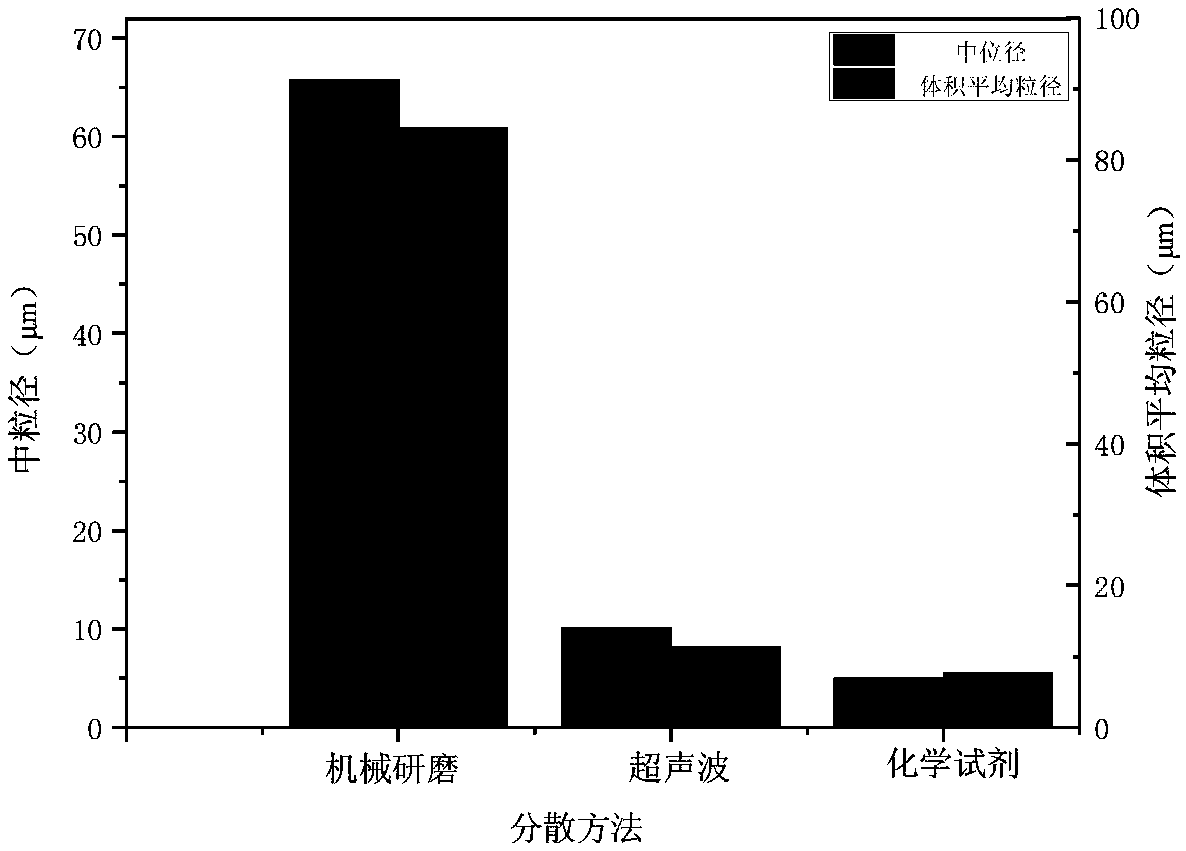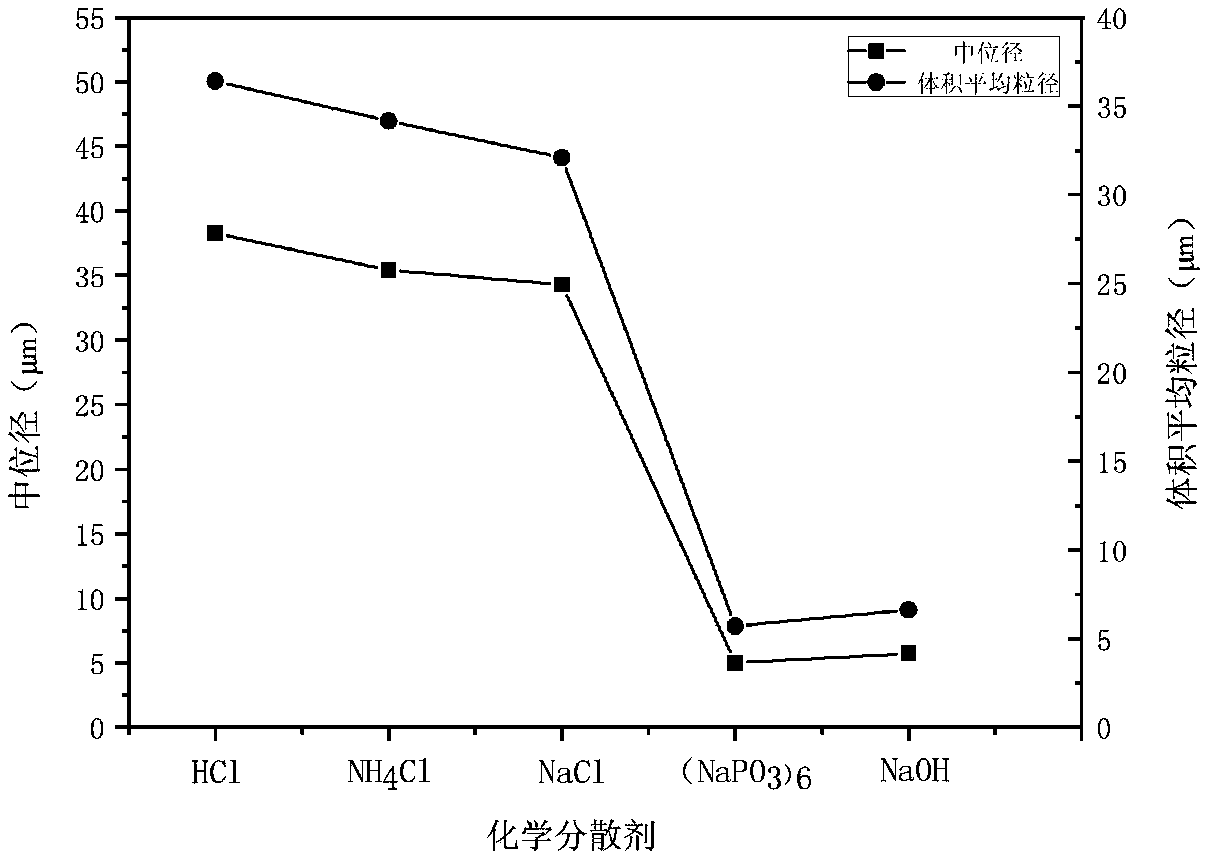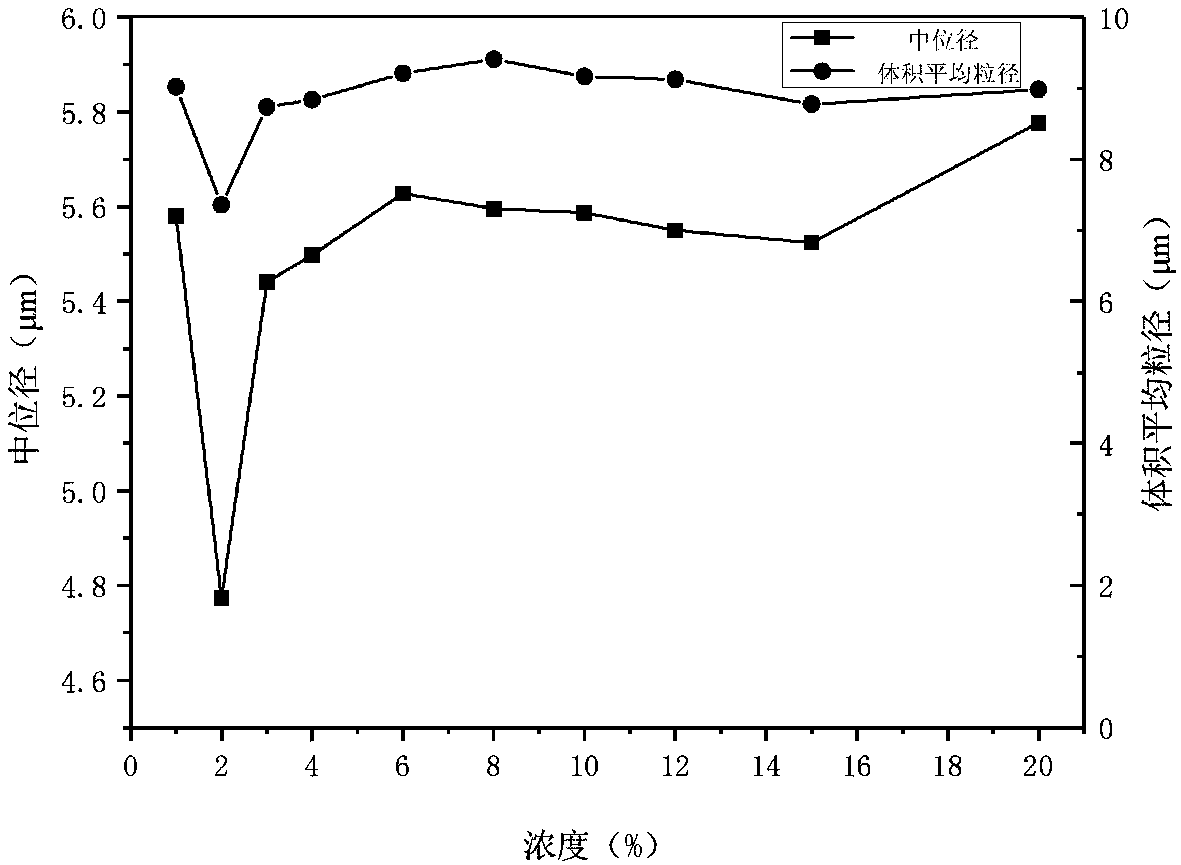Method for determining particle size distribution of Guiyang red clay based on laser particle size analyzer
A laser particle size and particle size distribution technology, which is applied in particle size analysis, particle and sedimentation analysis, and material analysis, can solve problems that cannot meet the needs of scientific research on Guiyang red clay particles, and achieve clear thinking, improved separation, and simple operation Effect
- Summary
- Abstract
- Description
- Claims
- Application Information
AI Technical Summary
Problems solved by technology
Method used
Image
Examples
Embodiment 1
[0041] A method for measuring the particle size distribution of Guiyang red clay based on a laser particle size analyzer, specifically comprising the following steps:
[0042] ①Take a Guiyang red clay sample in the field, bake it at 105-110°C for 35 hours, take an air-dried soil sample and put it in a mortar, put the air-dried or dried soil sample on a rubber board and grind it with a wooden mill to disperse part of the soil Can pass through a fine sieve with an aperture of 1mm;
[0043] ②Sieve the ground red clay with a fine sieve with an aperture of 1mm;
[0044] ③ Put 0.3 g of sieved red clay into a beaker filled with 12 ml of 2% sodium hexametaphosphate solution, and soak for 20 min;
[0045] ④ Stir the soaked solution in step ③ for 3 minutes with a glass rod, then put it into a constant temperature oscillator, set the temperature at 40°C, and shake at a constant temperature for two hours, immediately drain the red clay into a laser particle size analyzer with a glass rod...
Embodiment 2
[0047] A method for measuring the particle size distribution of Guiyang red clay based on a laser particle size analyzer, specifically comprising the following steps:
[0048] ① Take Guiyang red clay samples in the field, bake them at 105-110°C for 48 hours, take the air-dried soil samples and put them in a mortar, put the air-dried or dried soil samples on a rubber board and grind them with a wooden mill to disperse part of the soil Can pass through a fine sieve with an aperture of 1mm;
[0049] ②Sieve the ground red clay with a fine sieve with an aperture of 1mm;
[0050] ③ Put 0.3 g of sieved red clay into a beaker filled with 12 ml of 2% sodium hexametaphosphate solution, and soak for 25 min;
[0051] ④ Stir the soaked solution in step ③ for 3 minutes with a glass rod, then put it into a constant temperature oscillator, set the temperature at 40°C, and shake at a constant temperature for two hours, immediately drain the red clay into a laser particle size analyzer with a ...
Embodiment 3
[0053] A method for measuring the particle size distribution of Guiyang red clay based on a laser particle size analyzer, specifically comprising the following steps:
[0054] ① Take Guiyang red clay samples in the field, bake them at 105-110°C for 24 hours, take the air-dried soil samples and put them in a mortar, put the air-dried or dried soil samples on a rubber board and grind them with a wooden mill to disperse part of the soil Can pass through a fine sieve with an aperture of 1mm;
[0055] ②Sieve the ground red clay with a fine sieve with an aperture of 1mm;
[0056] ③ Put 0.3 g of the sieved red clay into a beaker filled with 12 ml of a 2% sodium hexametaphosphate solution, and soak for 15 minutes;
[0057] ④ Stir the soaked solution in step ③ for 3 minutes with a glass rod, then put it into a constant temperature oscillator, set the temperature at 40°C, and shake at a constant temperature for two hours, immediately drain the red clay into a laser particle size analyzer...
PUM
 Login to View More
Login to View More Abstract
Description
Claims
Application Information
 Login to View More
Login to View More - R&D
- Intellectual Property
- Life Sciences
- Materials
- Tech Scout
- Unparalleled Data Quality
- Higher Quality Content
- 60% Fewer Hallucinations
Browse by: Latest US Patents, China's latest patents, Technical Efficacy Thesaurus, Application Domain, Technology Topic, Popular Technical Reports.
© 2025 PatSnap. All rights reserved.Legal|Privacy policy|Modern Slavery Act Transparency Statement|Sitemap|About US| Contact US: help@patsnap.com



